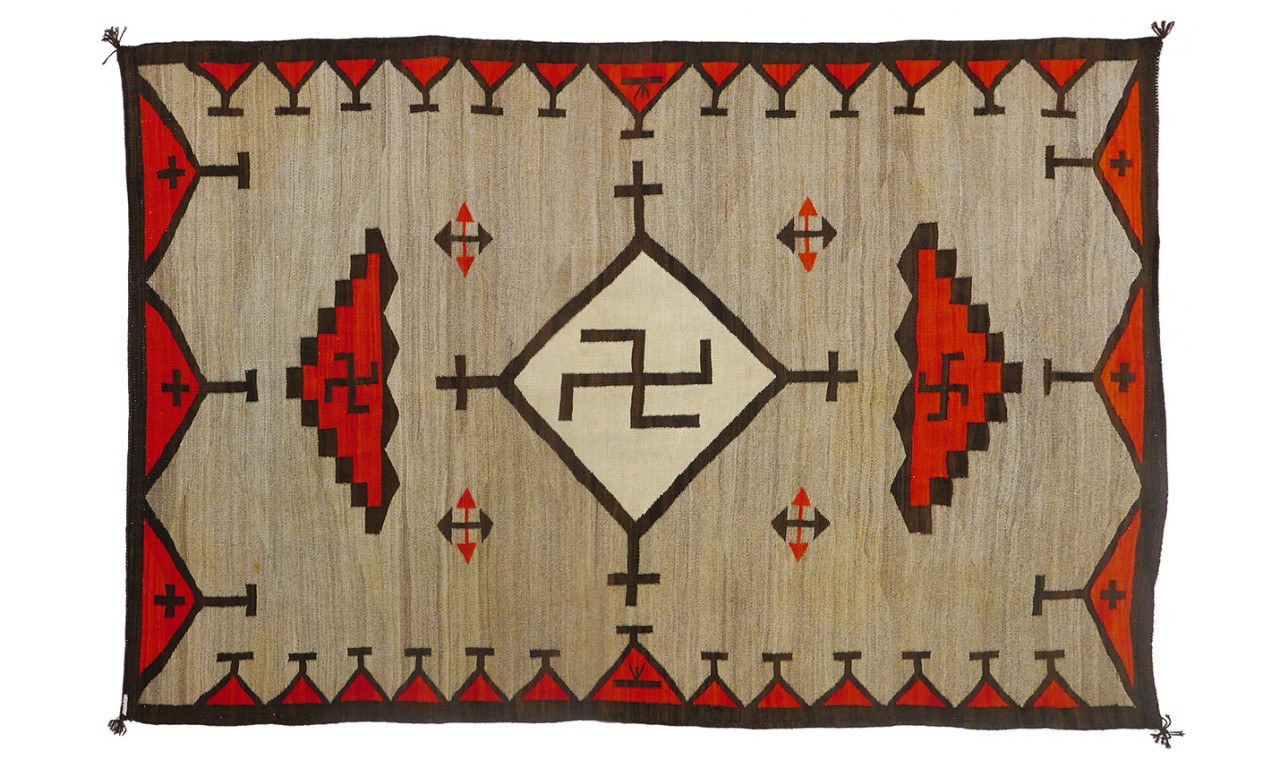 |
Rug, c. 1910
Navajo; probably Ganado, Arizona
Dyed wool; 65 x 105 in.
2019.5.1
Gift of Dennis J. Aigner |
White Hat
There is good cause for the romanticizing of the American West: it is a breathtaking part of this nation. Mesas rise from the red earth like monolithic and silent guardians; the skies are distilled blue, endless and not cloudy all day. More than just painfully beautiful vistas, the American West was—until the turn of the 20th Century—symbolic of freedom and the idea that people were bound only by the ideologies that they brought with them. All too often this vision was a warped one, but J.L. Hubbell’s realization of the Western dream has been kindly remembered for the humanitarian principles he brought with him when he set up shop as a trader of Navajo textiles. This blog post looks at both Hubbell and three Navajo rugs that passed through his Arizona trading post, focusing especially on how Hubbell affected the aesthetic of these textiles.
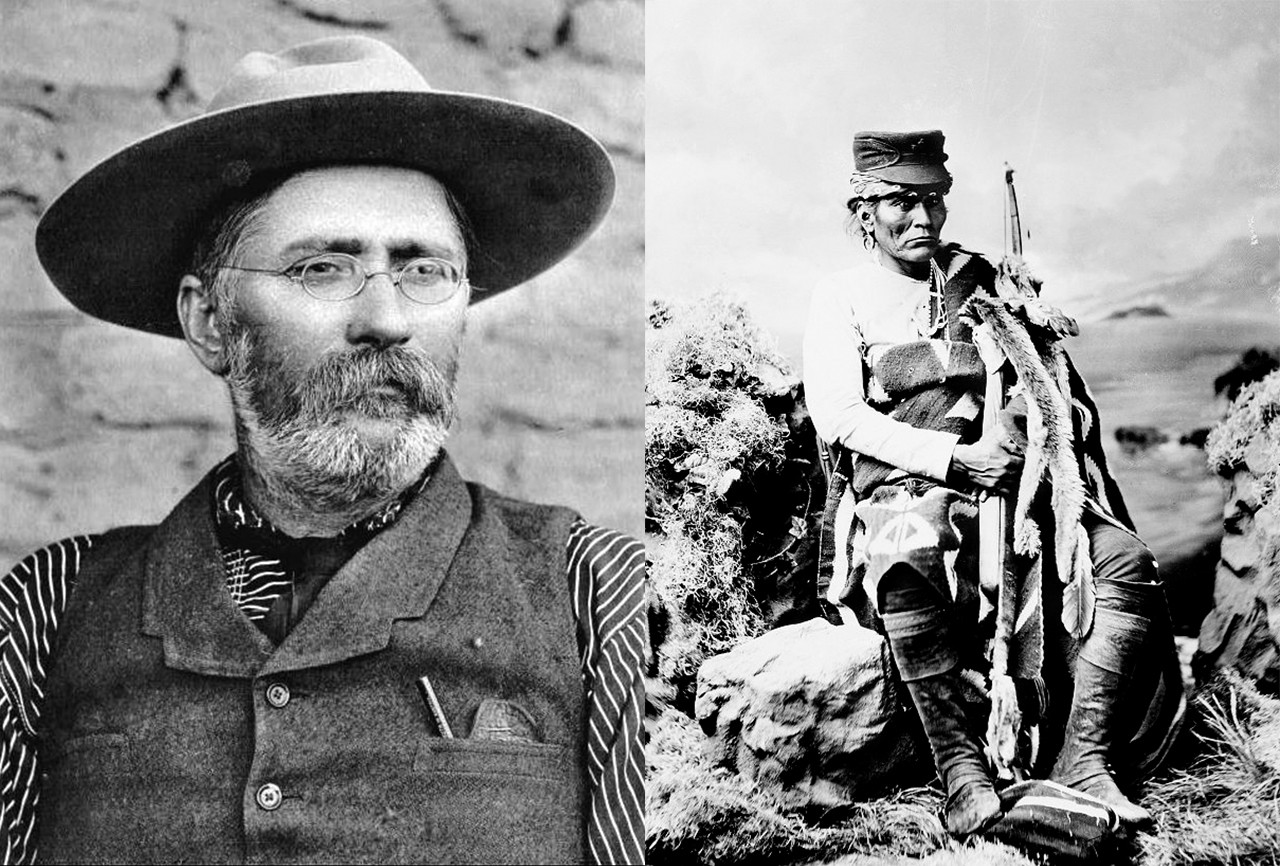 |
| Hubbell, circa 1910 (NPS, Hubbell Trading Post NHS; HUTR 4709) |
Ganado Mucho Navajo Leader, late 19th Century |
Many Ganado (Cattle)
John Lorenzo Hubbell was born in the New Mexico territory in 1853 as a son to a Connecticut Yankee rancher and the Spanish heiress to one of the territory’s large land grants. Seeking some excitement, in his early career Hubbell travelled the Southwest taking odd jobs and eventually working at the Navajo Agency in Fort Defiance, Arizona. It was there that he learned to speak Navajo, a language which would shape his career as a merchant. In 1876 Hubbell moved to Pueblo Colorado, Arizona and two years later he purchased a trading post. To avoid confusion with a similarly named locale, he renamed the trading post Ganado after Ganado Mucho, a friend and Navajo leader he had met while working at Fort Defiance. Hubbell’s new post stocked supplies for the local Navajo population and bought and sold the textiles they made.
 |
Rug, c. 1910
Navajo; Ganado, Arizona
Dyed wool; 73 x 49 in.
2019.5.2
Gift of Dennis J. Aigner
|
Woven from Watercolor
Though not the first trader into the region, Hubbell was the first to take an involved role in the creation of the textiles. His unique approach was to find excellent examples of Navajo textiles from East Coast collections and to get painters to create small watercolor paintings of their designs. He used these paintings both as templates for the weavers and to show potential buyers options they could commission. This system was problematic though: its “plates” deviated slightly from traditional Navajo weavings, it removed much of the creative aspect of the weavings, perpetuated the commodification of indigenous arts, created dependency where Hubbell provided weavers with dyed wool for rugs, and made him the sole curator of Navajo designs and color patterns. But Hubbell was unique in that he lived the lifestyle he sold in curios to East Coast tourists. In exchange for asking for the highest quality outputs from Navajo weavers, he advocated for them and insisted that they were paid fair wages. While almost all regional traders abused the cheap labor, Hubbell has instead been remembered for his honest and fair treatment of the Navajo which at the end of his life earned him the endearing title Naakaii Saani, Old Mexican.

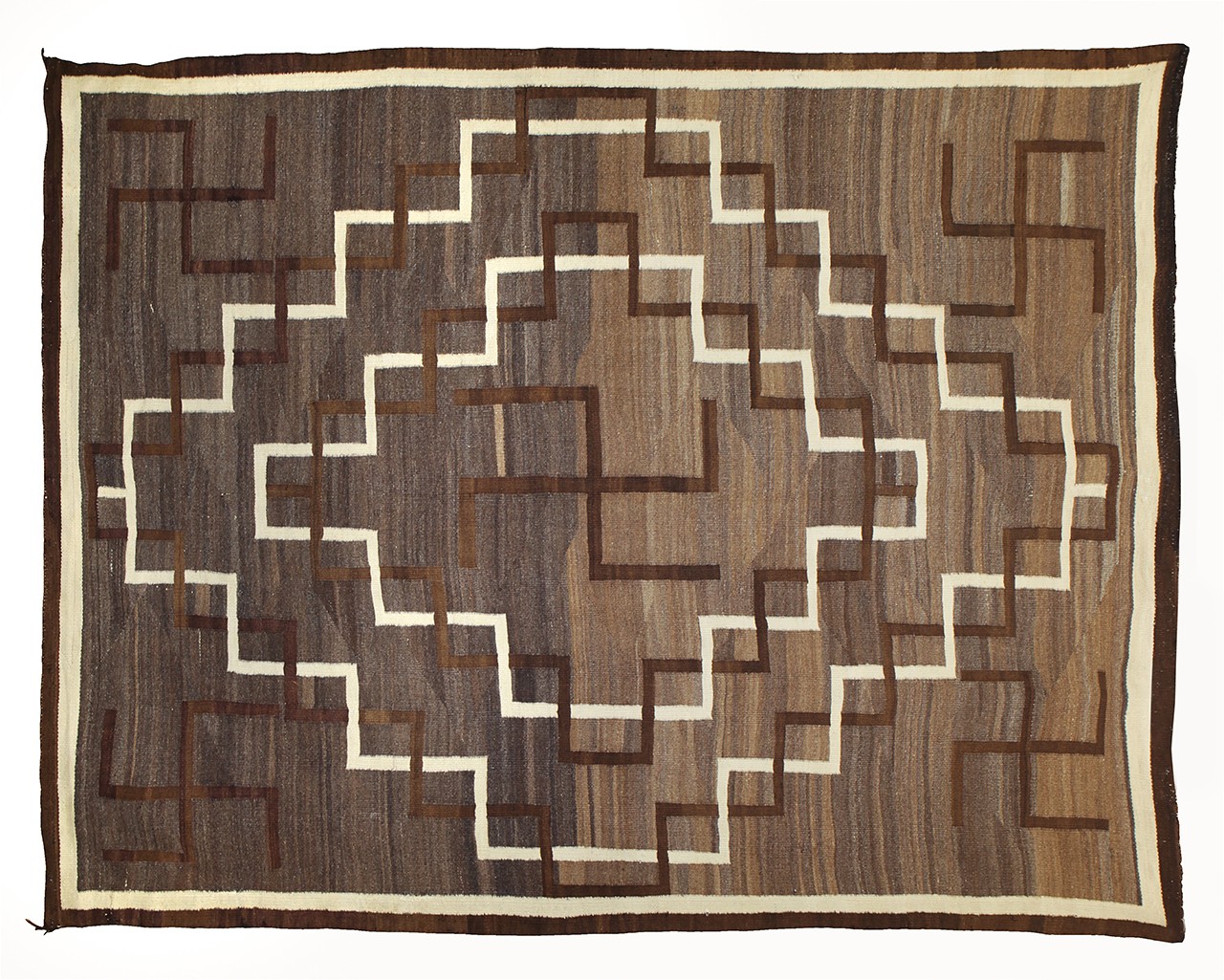 |
Rug, 1905-1920
Navajo; Ganado, Arizona
Dyed wool; 88 × 67 in.
2016.12.2
Gift of Dennis J. Aigner |
The Hubbell Cross
Aside from just pulling from older Navajo designs, Hubbell also added new motifs to the repertoire of the weavers he worked with and set more general aesthetic standards. While the lack of catalogues for his early textiles makes their identification difficult, certain identifiers can be seen in all three of the textiles featured in this post. The swastika motif, an ancient symbol of good fortune and a reference to the Navajo night chant, was an extremely prevalent design which increasingly appeared in Hubbell’s rugs circa 1900, especially after positive feedback from buyers like the Fred Harvey Company. Other identifiers are the distinct, bold borders; the gray, white, black and especially red color palettes; and the usage of the Bishop Cross, which can be seen at the corners of the largest textile’s central diamond and in the zig-zagging red border. The interlocking patterns on two of this post’s textiles were less common, but still characteristic of Ganado-area textiles.

|
|
| Hubbell Trading Post National Historic Site at Ganado, Arizona. Taken by Ron Cogswell and licenced under the Creative Commons Attribution 2.0 Generic license; Hubbell buying a rug on the north wall of the post, probably from the Navajo weaver, circa 1897 (NPS, Hubbell Trading Post NHS; HUTR 2165) |
Don Lorenzo the Magnificent
Hubbell was an incredibly successful businessman, once owning up to 24 trading posts throughout California, New Mexico, and Arizona. He was well-respected by the local Navajo he served and purchased textiles from, and by the travelers he entreated with warm hospitality and tall tales from his life. After his passing in 1930, his children continued his legacy of operating his most famous location, the Hubbell Trading Post in Ganado, Arizona. The trading post is still in operation today as a National Historic Site operated by the National Park Service and maintains close ties with the new generation of weavers whose art Hubbell’s trading helped keep alive.
Text and images may be under copyright. Please contact Collection Department for permission to use. References are available on request. Information subject to change upon further research.





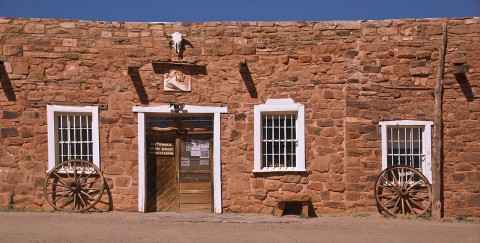
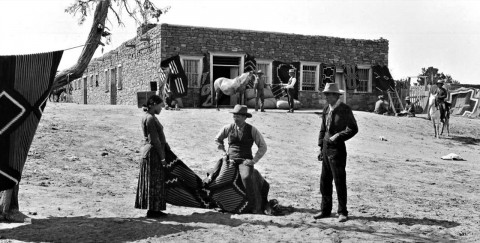
Comments